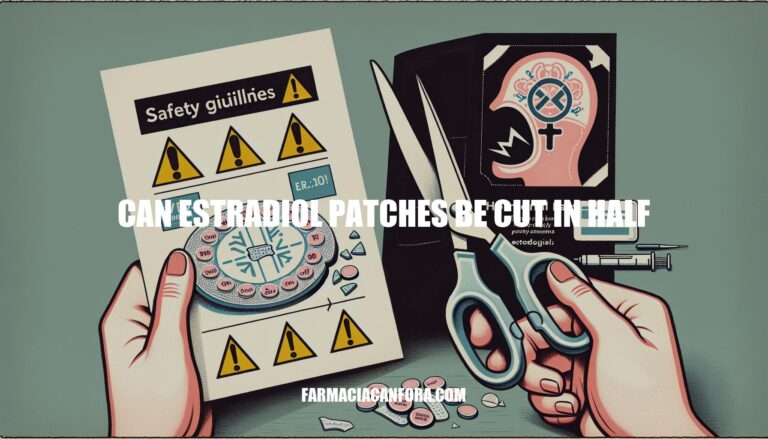


Understanding whether estradiol patches can be cut in half is crucial for ensuring their effectiveness and safety. People might consider cutting these patches to adjust their dosage, save costs, or manage supply issues. However, it’s important to know the implications of altering the patch before making any changes.
Estradiol patches are designed to deliver the hormone estradiol through the skin into the bloodstream. They consist of several layers:
The patch releases estradiol at a controlled rate, allowing it to pass through the skin layers and enter the bloodstream.
The structure of the patch is crucial because it determines the uniformity of drug distribution. Cutting the patch can disrupt this uniformity, leading to an unpredictable release of medication. This is especially true for patches with a reservoir or matrix design, where the drug is evenly distributed throughout the patch. Therefore, cutting the patch can result in an uneven dose, which can be ineffective or potentially harmful.
Matrix Patches:
Reservoir Patches:
Cutting estradiol patches in half is generally not recommended due to several safety and effectiveness concerns:
Controlled Release Mechanism: Estradiol patches are designed to release a precise amount of hormone consistently. Cutting the patch can disrupt this mechanism, leading to uneven hormone distribution and fluctuations in hormone levels.
Potential Risks:
Efficacy: The patch’s design ensures a stable release of estradiol, which is crucial for effective therapy. Cutting the patch compromises this stability, leading to suboptimal treatment outcomes.
If dosage adjustments are needed, it’s best to consult with a healthcare provider to explore safer alternatives, such as switching to a different patch strength or using another form of hormone therapy.
Cutting estradiol patches in half is generally not recommended due to safety and effectiveness concerns. Here are the key guidelines and recommendations from healthcare professionals:
Controlled Release Mechanism: Estradiol patches are designed to deliver a precise amount of hormone. Cutting them can disrupt this controlled release mechanism, leading to uneven hormone distribution and suboptimal therapy outcomes.
Safety Concerns: Cutting the patch may expose the adhesive layer, increasing the risk of skin irritation or allergic reactions.
Effectiveness: The patch’s design ensures a consistent release of estrogen, crucial for maintaining stable hormone levels. Altering the patch can compromise its effectiveness.
Medical Guidance: Always consult with your healthcare provider before making any changes to your hormone therapy. They can provide personalized guidance and explore alternative options, such as switching to a different patch with a lower or higher estrogen concentration.
Official Advice: Some healthcare institutions, like BC Children’s Hospital, provide specific instructions on how to cut patches if absolutely necessary, but this is typically under strict medical supervision.
For more detailed information, refer to the sources provided by healthcare professionals and institutions.
Cutting estradiol patches in half is generally not recommended due to safety and effectiveness concerns. The patch’s design ensures a controlled release of hormone, which can be disrupted by cutting it.
This can lead to uneven hormone distribution, skin irritation, overdose risk, and suboptimal treatment outcomes.
If dosage adjustments are needed, consult with a healthcare provider to explore safer alternatives. They can provide personalized guidance and help you make informed decisions about your hormone therapy.